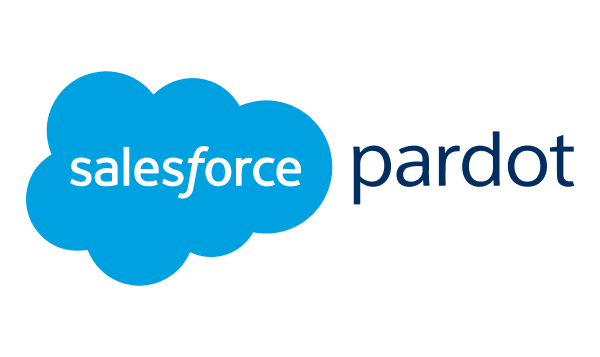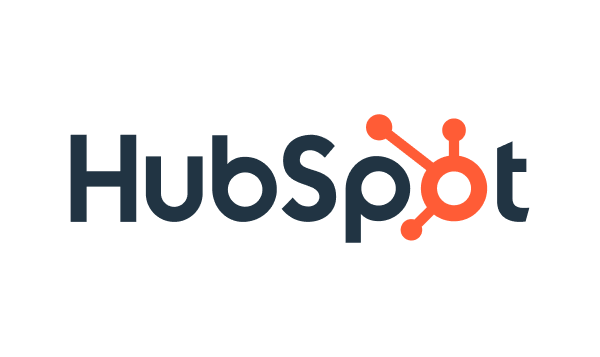- Premium features included
- No hidden costs or usage limits
- Scale from startup to enterprise



Choosing the right marketing automation platform can transform your business operations and revenue growth. Pardot (now Salesforce Marketing Cloud Account Engagement) and HubSpot Marketing Hub dominate the B2B marketing automation landscape, each offering powerful capabilities for lead generation, nurturing, and conversion.
This comprehensive comparison analyzes both platforms across features, pricing, usability, and real user feedback to help you make the best decision for your business in 2025.
Both platforms excel at core marketing automation functions, but they cater to different business needs and technical requirements. While HubSpot is great for rapid adoption without intensive training, Pardot integrates well with Salesforce but lacks the intuitive design that HubSpot offers.
Understanding these fundamental differences is crucial for making an informed platform selection.
Pardot
HubSpot
Best For
Mid-sized to large B2B companies using Salesforce
Small to mid-sized businesses seeking all-in-one solution
Starting Price
$1,250/month (Growth plan)
Free plan available, paid from $45/month
Primary Strength
Deep Salesforce CRM integration
User-friendly interface and inbound marketing
Learning Curve
Moderate to steep (Salesforce ecosystem)
Easy to moderate
Free Plan
No free plan available
Comprehensive free plan with core features
Target Market
B2B enterprises with complex sales cycles
SMBs to mid-market companies
This overview reveals that HubSpot is the superior choice for small to medium-sized businesses who want a full inbound marketing platform, while Pardot is tailored for mid-sized to large B2B companies already embedded in the Salesforce ecosystem.
Pardot
HubSpot
Email Marketing
Advanced B2B email automation
Comprehensive email tools with AI
Lead Scoring
Sophisticated scoring & grading
Predictive lead scoring (Enterprise)
CRM Integration
Native Salesforce integration
Built-in CRM + external integrations
Landing Pages
Basic landing page builder
Advanced drag-drop builder
Social Media
Limited social features
Comprehensive social media management
Content Management
No CMS capabilities
Full CMS with blogging tools
Analytics & Reporting
Advanced B2B reporting
Customizable dashboards & reports
Automation Workflows
Engagement Studio workflows
Visual workflow builder
A/B Testing
Email and landing page testing
Comprehensive A/B testing suite
SEO Tools
No built-in SEO features
Advanced SEO recommendations
Pardot excels in B2B-specific marketing automation with sophisticated lead management capabilities. Pardot is a marketing automation solution that enables marketers to identify prospective customers that are most likely to convert. The platform’s Engagement Studio provides robust workflow automation, while its native Salesforce integration ensures seamless data flow between marketing and sales teams.
Key strengths include advanced lead scoring and grading systems, comprehensive B2B analytics, and deep integration with the Salesforce ecosystem. However, Pardot’s automation is serviceable for basic lead nurturing and drip campaigns, but it lacks the customization depth that HubSpot provides. The platform also lacks content management capabilities and has limited social media functionality compared to HubSpot.
HubSpot offers an all-in-one marketing solution designed for comprehensive inbound marketing strategies. HubSpot offers many marketing automation tools like email marketing, social media management, lead tracking, landing page creation, and much more. The platform includes a built-in CRM, content management system, and extensive integration marketplace with over 1,000+ available integrations.
Notable advantages include intuitive workflow builders, comprehensive social media management, advanced SEO tools, and robust content creation capabilities. HubSpot delivers strong automation capabilities, allowing users to build multi-channel campaigns, set up sophisticated workflows, and utilize personalization. The platform’s user-friendly interface makes it accessible to marketing teams without extensive technical expertise.
Pardot
HubSpot
Entry Level
Growth: $1,250/month (10,000 contacts)
Free plan + Starter: $45/month (1,000 contacts)
Mid-Tier
Plus: $2,500/month (10,000 contacts)
Professional: $800/month (2,000 contacts)
Advanced
Advanced: $4,000/month (10,000 contacts)
Enterprise: $3,600/month (10,000 contacts)
Premium
Premium: $15,000/month (75,000 contacts)
Custom Enterprise pricing
Pardot’s starting tier (known as the Growth plan) begins at $1,250 a month in comparison to HubSpot’s $45. This significant pricing difference makes HubSpot more accessible for smaller businesses and startups. However, it’s important to note that Account Engagement is an add-on to the Salesforce CRM platform, not a standalone solution, which adds additional licensing costs.
Cost considerations: While HubSpot’s initial pricing appears lower, costs can escalate quickly as contact databases grow and advanced features are needed. HubSpot’s pricing tiers accommodate a range of budgets and scale effectively as companies grow. However, additional costs for premium features, like advanced reporting or larger contact lists, can add up.
Pardot
HubSpot
Free Plan Available
No free plan
Comprehensive free plan
Contact Limit
No free plan
1 million contacts
Email Marketing
No free plan
Up to 2,000 emails/month
Forms & Landing Pages
No free plan
Unlimited forms, basic landing pages
CRM Access
No free plan
Full CRM with unlimited users
Live Chat
No free plan
Basic live chat functionality
Ad Management
No free plan
Google Ads integration
HubSpot’s free plan advantage is substantial for businesses testing marketing automation waters. The free HubSpot plan offers many functionalities of the Marketing Hub, but with pretty limited scope. This allows companies to experiment with marketing automation before committing to paid plans, while Pardot requires immediate financial investment for any access.
Pardot
HubSpot
Strengths of Pardot include its powerful Salesforce ecosystem integration, making it ideal for organizations already using Salesforce CRM. The Pardot integration with Salesforce is where Pardot ‘takes the cake’. The platform offers sophisticated lead management capabilities designed specifically for B2B marketing teams with complex sales cycles.
Limitations include limited content creation tools, higher barrier to entry due to pricing, and Salesforce’s support for Pardot has lagged in terms of feature innovation, with limited development updates and rumors of potential phase-outs. The platform also requires Salesforce CRM licensing, adding to total cost of ownership.
Key advantages include exceptional ease of use, comprehensive inbound marketing tools, and extensive third-party integrations. HubSpot is designed as a marketing automation platform, the shoe just fits and you won’t find anything better for the price. The platform’s all-in-one approach eliminates the need for multiple point solutions.
Potential drawbacks include complexity for users who only need basic automation, pricing that can escalate with contact growth, and some advanced features requiring Enterprise-level subscriptions. Additionally, it doesn’t natively support using product activity data to trigger campaigns, which can limit SaaS companies.
Based on G2 data, HubSpot rates 4.3/5 stars with 3,674 reviews. Pardot rates 4.0/5 stars with 1,497 reviews. Users consistently praise HubSpot’s intuitive interface and comprehensive feature set. One G2 reviewer noted: “It really helped bring everything in one place for us, emails, landing pages, forms etc. We are now able to design complex drip paths for the customer nurturing”.
HubSpot users frequently highlight the platform’s ease of use and integration capabilities. “The best part about the Hubspot Marketing Hub is being an Omni channel platform, as everything is connected in one place”. However, some users note that costs can escalate quickly as businesses scale and require more advanced features.
Pardot users appreciate the deep Salesforce integration and sophisticated B2B marketing capabilities. “Pardot is great in that it has many connections to external services that give you better insights into your contact’s digital body language”. However, users often mention the platform’s learning curve and limited innovation compared to competitors.
Capterra reviews consistently position HubSpot as more user-friendly for small to mid-sized businesses, while Pardot receives praise from enterprise users already embedded in the Salesforce ecosystem. Users appreciate HubSpot’s onboarding process and extensive educational resources, while Pardot users value the platform’s advanced reporting capabilities and lead management features.
Common themes in Capterra reviews include HubSpot’s superior content management capabilities and social media tools, while Pardot users frequently mention the platform’s robust analytics and seamless Salesforce data synchronization.
Trustpilot reviews reflect similar patterns, with HubSpot receiving praise for customer support and ease of implementation. Users frequently mention the platform’s responsive customer service and comprehensive knowledge base. Pardot users on Trustpilot often highlight the platform’s reliability and integration stability with Salesforce, though some express concerns about the platform’s future development roadmap.
Reddit discussions about Pardot vs HubSpot often focus on practical implementation challenges and real-world usage scenarios. Users note that “Pardot saw some improvement when it was transitioned to SFMC Account Engagement, but it still feels like it was designed for marketers by sales people who just don’t get it”.
HubSpot discussions on Reddit frequently praise the platform’s workflow capabilities: “The workflows are so easy to use. They’re intuitive and flexible, and you can do anything your team dreams up”. Users also appreciate the operational efficiency gains: “A campaign that used to take four different team members and six web-based tools can be done by one person with HubSpot”.
Both Pardot and HubSpot are powerful marketing automation platforms, but they serve different market segments and business needs. HubSpot emerges as the better choice for small to mid-sized businesses seeking an all-in-one inbound marketing solution with intuitive usability and comprehensive features. Its free plan, lower barrier to entry, and extensive integration ecosystem make it ideal for growing companies.
Pardot remains the preferred option for mid-sized to large enterprises already using Salesforce CRM, particularly those with complex B2B sales cycles requiring sophisticated lead management capabilities. However, concerns about future development and the platform’s innovation pace may warrant consideration of alternatives.
Our recommendation: Choose HubSpot if you prioritize ease of use, comprehensive inbound marketing features, and cost-effective scaling. Select Pardot if you’re deeply embedded in the Salesforce ecosystem and require advanced B2B marketing automation with sophisticated lead scoring capabilities.
Consider evaluating platforms like Sender for email-focused marketing automation needs, which offers competitive pricing and specialized email marketing features that might complement either platform’s capabilities, particularly for businesses primarily focused on email marketing campaigns rather than comprehensive marketing automation.
